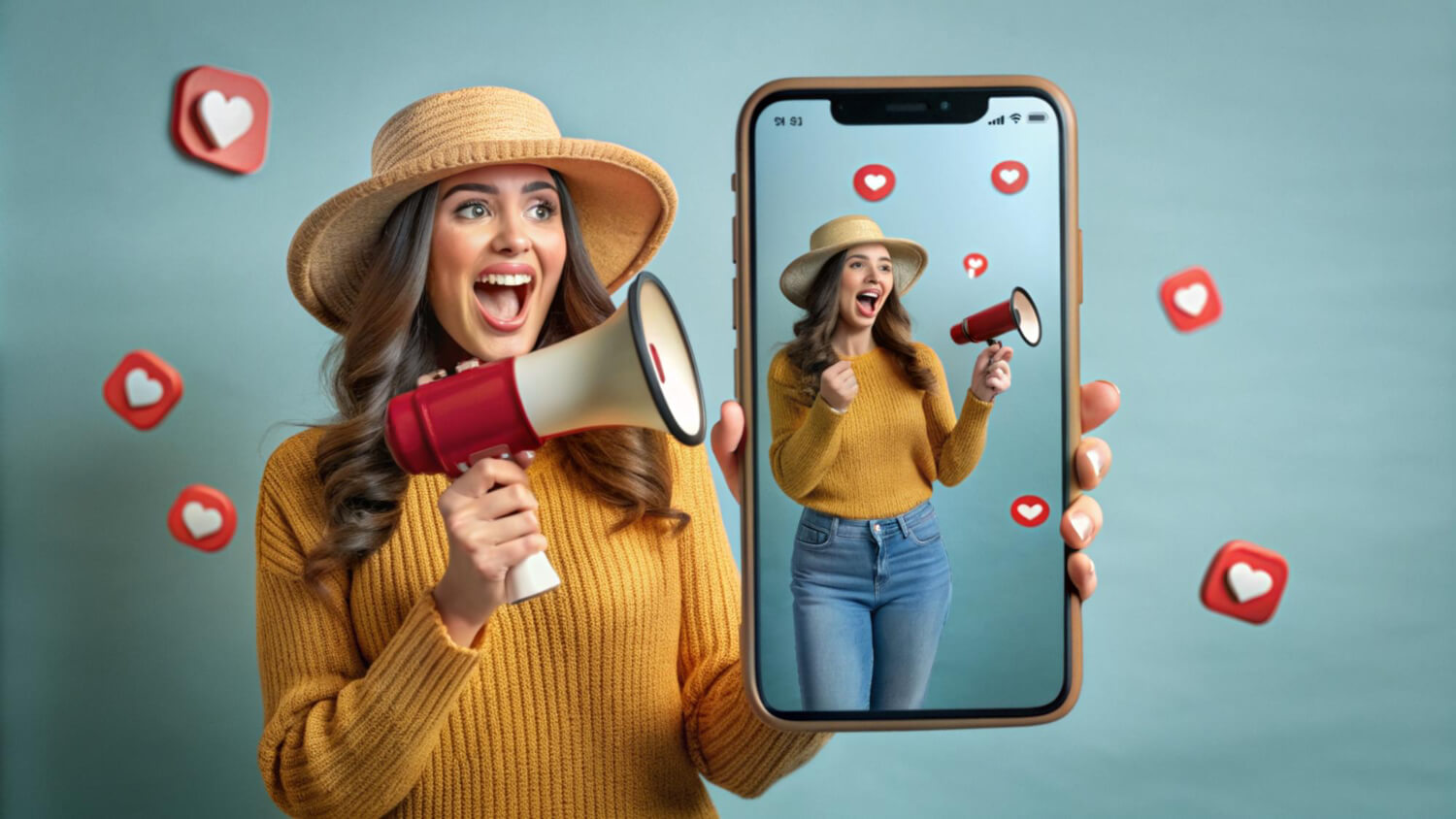
Navigating the Digital Landscape: KOLs vs. Influencers and Their Impact on Your Brand
Published Aug 10, 2024Contents
- Defining KOLs and Influencers: Understanding the Terminology
- How KOLs and Influencers Operate
- The Key Differences Between KOLs and Influencers
- The Impact of KOLs and Influencers on Brands
- Choosing the Right Strategy: KOLs vs. Influencers
- Best Practices for Partnering with KOLs and Influencers
- Case Studies on Successful Campaigns
- The Future of Influencer Marketing and the Role of KOLs
- Conclusion
Defining KOLs and Influencers: Understanding the Terminology
Before we dive deeper, it's essential to clarify the terminology. "KOLs," or Key Opinion Leaders, and "influencers" are often used interchangeably, but they have distinct differences.
KOLs are individuals with expertise or authority in a specific field. They are recognized for their knowledge, skills, and insight, often serving as thought leaders in their niches. Their influence is built on a foundation of credibility and expertise, making their opinions highly valued by their audience.
On the other hand, influencers are individuals who have garnered a significant following due to their online persona. They may not always be experts in a particular area, but their charisma and relatability allow them to engage and sway their followers effectively. Influencers are known for their ability to create relatable content that resonates with their audience on a personal level.
Understanding these differences is crucial for brands looking to leverage either KOLs or influencers in their marketing strategies. Both bring unique strengths to the table, but selecting between them depends on the goals and needs of your campaign.
How KOLs and Influencers Operate
KOLs and influencers operate in ways that reflect their strengths and the expectations of their audiences.
KOLs often focus on sharing insights and expertise through in-depth content such as blogs, webinars, and industry reports. Their content is driven by their knowledge and experience, which positions them as authoritative voices in their fields. Brands looking to enhance their credibility might partner with KOLs to endorse their products or services.
Influencers, meanwhile, thrive on social media platforms like Instagram, TikTok, and YouTube, where visual and engaging content is key. Their strength lies in their ability to capture attention and create buzz through creative storytelling. Influencers excel at creating lifestyle content that seamlessly integrates products, encouraging their followers to make purchases through relatable experiences.
Both KOLs and influencers use their platforms to connect with audiences, but the nature of their content and the depth of their influence can vary significantly. Brands must assess which type of partnership aligns best with their marketing objectives.
The Key Differences Between KOLs and Influencers
While both KOLs and influencers hold sway over their audiences, their core differences can impact your marketing strategy.
Level of Expertise:
KOLs are typically experts with a deep understanding of their field, offering valuable insights based on their knowledge. Influencers may not have the same level of expertise but possess a strong connection with their audience due to their personality and content style.
Audience Engagement:
Influencers often engage their audience through frequent interactions, responding to comments, and creating content that encourages participation. KOLs, however, might engage less frequently, focusing more on delivering high-quality, informative content.
Content Style:
KOLs tend to produce more educational and informative content, while influencers focus on relatable and entertaining content. Brands must decide which style aligns with their objectives and target audience.
Understanding these differences can help marketers and business owners choose the right type of partnership for their brand, maximizing the impact of their campaigns.
The Impact of KOLs and Influencers on Brands
Both KOLs and influencers can significantly impact brand visibility, credibility, and sales. Here’s how:
Partnering with KOLs can enhance a brand's credibility and authority. By associating with industry experts, brands can benefit from the trust and respect these individuals command within their communities. KOL endorsements can lend authenticity to a brand, fostering consumer confidence and increasing brand loyalty.
Influencers, on the other hand, can help brands reach broader audiences and generate buzz. Their relatability and storytelling abilities make them ideal for creating engaging content that captures attention and drives consumer interest. Influencer partnerships can lead to higher engagement rates and increased brand awareness.
Both KOLs and influencers can contribute to a brand's success, but the choice between them should be guided by the brand's specific goals and target audience.
Choosing the Right Strategy: KOLs vs. Influencers
Selecting between KOLs and influencers requires careful consideration of the brand's objectives, target audience, and resources.
For brands aiming to establish credibility and authority, KOLs may be the ideal choice. Collaborating with experts can help build trust and convey a brand's commitment to quality and expertise.
Conversely, if a brand seeks to create buzz and reach a broader audience, influencers may be more suitable. Their ability to engage and entertain can drive awareness and generate excitement around a brand.
Ultimately, the decision should be based on a strategic evaluation of the brand's goals and the strengths that each type of partnership can offer.
Best Practices for Partnering with KOLs and Influencers
To maximize the benefits of partnerships with KOLs and influencers, consider these best practices:
Define Clear Objectives:
Before engaging with KOLs or influencers, establish clear objectives for your campaign. Determine what you hope to achieve and how you will measure success.
Select the Right Partner:
Carefully research and vet potential partners to ensure alignment with your brand values and goals. Evaluate their audience demographics, engagement rates, and content style.
Foster Authentic Relationships:
Build genuine relationships with KOLs and influencers by engaging with their content, acknowledging their expertise, and collaborating on creative ideas.
By following these best practices, brands can create successful partnerships that yield positive results and build long-term relationships.
Case Studies on Successful Campaigns
Several brands have successfully leveraged KOLs and influencers to achieve remarkable results:
PepsiCo and KOLs:
PepsiCo partnered with industry experts and KOLs to promote its new product line. By showcasing the product's health benefits through expert insights, PepsiCo successfully enhanced its credibility and attracted health-conscious consumers.
Glossier's Influencer Strategy:
Glossier, a beauty brand, built its success by collaborating with influencers who authentically loved and used their products. This strategy created a sense of community and trust, driving word-of-mouth recommendations and boosting Glossier's popularity.
Nike's Impactful Influencer Partnerships:
Nike's collaboration with influencers in the fitness and sports industry helped the brand reach diverse audiences and maintain its position as a leader in sportswear. By aligning with influencers who embodied Nike's values, the brand achieved widespread recognition and engagement.
These case studies highlight the potential for success when brands strategically partner with KOLs and influencers to achieve their marketing objectives.
The Future of Influencer Marketing and the Role of KOLs
The landscape of influencer marketing is continually evolving, and KOLs are likely to play an increasingly important role.
As consumers become more discerning, the demand for genuine, authentic content will continue to grow. KOLs, with their expertise and credibility, are well-positioned to meet this demand by offering valuable insights and driving meaningful conversations.
Influencers will also remain a powerful force in the digital marketing space, adapting to new platforms and trends. Their ability to entertain and engage will continue to be a valuable asset for brands looking to connect with diverse audiences.
In this dynamic landscape, brands must remain agile and open to new opportunities for collaboration with both KOLs and influencers.
Conclusion
In conclusion, both KOLs and influencers offer unique opportunities for brands to connect with their audiences and achieve their marketing goals.
Whether you choose to partner with a KOL or influencer, understanding their strengths, audience, and content style is crucial for a successful collaboration. By leveraging their influence, brands can build trust, foster engagement, and drive sales.
For marketers and business owners, the key takeaway is to stay informed about the evolving landscape of influencer marketing, continually seeking new ways to engage with these digital personalities.
Explore the possibilities of KOLs and influencers for your brand today, and unlock the potential of influencer marketing in the digital age.
Grow your Instagram with Stormlikes

Georgia Austin
AUTHOR & EDITOR-IN-CHIEFGeorgia Austin is a writer who specializes in social media, marketing, and digital strategy. She is a graduate of Antioch College and earned her MBA at Boston College's Carroll Graduate School of Management, specializing in STEM Management. Her work has been published in numerous academic journals and mainstream publications. She lives in New England with her husband, two children, and three dogs.


